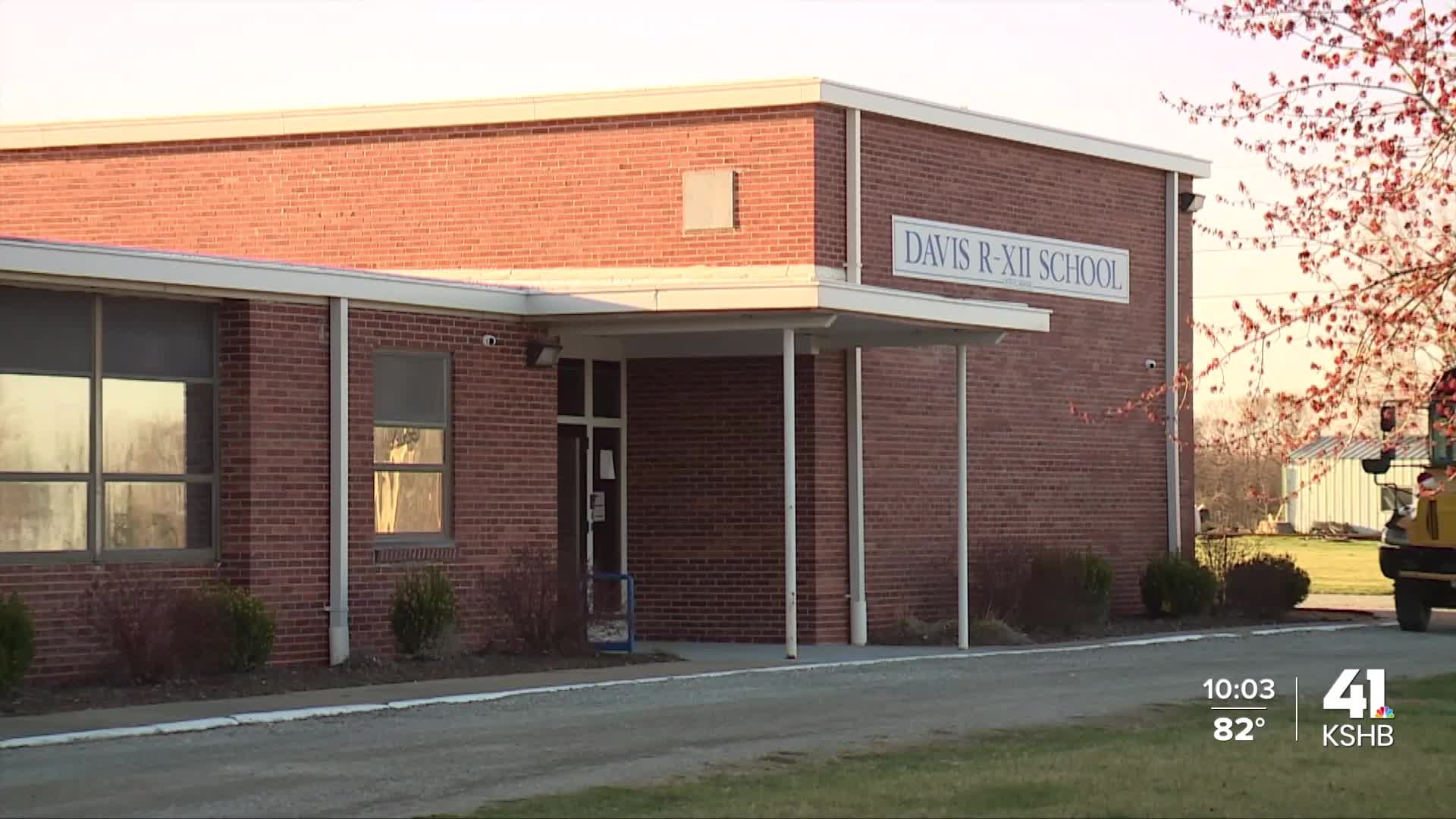KSHB 41 reporter Isabella Ledonne covers issues surrounding government accountability, solutions and consumer advocacy. Share your story with Isabella.
The Environmental Protection Agency released its soil sample testing Wednesday at the local school district in Henry County for hexavalent chromium, a cancer-causing chemical. It's the fifth round of testing in the community this year.
Two samples out of the 14 taken at the Davis R-12 School District detected hexavalent chromium on school grounds in "very low" amounts.
The low detection levels, which are below the agency's accepted action removal levels, mean the EPA will not be using resources to remove any soil or structures at the Davis R-12 School District.
“We follow a rigorous scientific process at EPA, and Henry County residents should have a high level of confidence in these results showing that they are not at risk from hexavalent chromium," EPA Region 7 Administrator Jim Macy said.
Davis R-12 School District, which has been hosting classes off campus at a nearby church, decided to return to its existing buildings for the 2025-2026 school year. Students and teachers are expected back for the first day of classes on August 20. The school board voted to pay for the tuition at another district of any student not returning this year due to cancerous chemical concerns.
School enrollment has declined almost 50% from the 2024-2025 to the 2025-2026 school year.
Hexavalent chromium in Henry County
Hexavalent chromium is a known carcinogen that has been known to cause a variety of health issues from cancer to digestive sickness. It's presence has rocked the entire Henry County, Missouri community since January 2025. Local leaders and community members called on the utility company, Evergy, to address concerns with coal by-product deposits at its Montrose facility.
Coal by-products or waste can produce fly-ash, which is known to be a source for hexavalent chromium. Evergy has continued to deposit its coal waste from other facilities in Montrose, denying any allegations of wrong doing or mishandling.
Some neighbors, like Josiah Town, had their own testing done at their home. Testing on his land revealed hexavalent chromium levels at 6.845 milligrams per kilogram (mg/kg). That's 600% more than the EPA's accepted screening amount of 0.95 mg/kg, but less than the action management level.

"It's definitely concerning when you have your little ones playing in the dirt and stuff," Town said.
Town's testing came from the Triangle Environmental Group, which also sampled soil and buildings at the Davis R-12 School District. Those results showed even higher hexavalent chromium levels of up to 17.7 mg/kg. That's a 1,700% increase over the EPA's accepted screening amount, but 74% less than the EPA's action level amount.
Another test from Occu-Tech, at the request of the school district, showed contaminant levels above the reporting limits in the soil and on the playground.
Davis R-12 School District voted to move classes to a nearby church while further testing occurred during the winter and spring months.
Multiple testings for hexavalent chromium
EPA researchers conducted testing at the Davis R-12 School campus at the end of June. It came after the Triangle Environmental Group, Occu-Tec, Evergy, Missouri Department of Natural Resources (DNR) and Henry County conducted their own testing samples at the school, Evergy's Montrose facility and local soil and water supplies.
Triangle's, Occu-Tec's and Henry County's testing samples all revealed hexavalent chromium in higher amounts than Missouri DNR's, Evergy's and the EPA's.
The EPA uses screening levels and action levels to determine the risk associated with hexavalent chromium. The accepted screening level is 0.95 mg/kg.

"A screening level is set for a lifetime exposure," EPA director of laboratory sciences and applied science division Cecilia Tapia said. "[It's set for] if you're going to be in that spot for a lifetime."
The EPA's action level is much higher at 70 mg/kg. That level determines if the governmental agency would use federal resources to clear the contaminated soil from the community or the school district.
"We set a very, very stringent standard," Tapia said. "The screening level is extremely conservative, even compared to the removal action level."
Out of the 14 samples the EPA took at the school district, two were detected above the accepted screening levels. Two samples revealed the cancerous chemical at 1.0 mg/kg and 0.21 mg/kg.
"The highest level was one part per million which is 70 times below any action level where the EPA would perform a response action on residential soils," Tapia said.
Missouri DNR's testing also detected "no concerning levels" of hexavalent chromium at the school.
Triangle's, Occu-Tec's and Henry County's testing did find the chemical levels above their reporting limits, but it was still under the EPA's actionable level that would call for removal.
During an interview with KSHB 41 News reporter Isabella Ledonne, Tapia explained the EPA's rigorous quality assurance methods could be the reason for the stark differences.

"The [EPA] sampling team also undergoes rigorous training, and they follow standard operating procedures to ensure there's no cross contamination," Tapia said. "At least for the EPA and the DNR analysis, we have great the data is very reliable, and we can assume that it's accurate."
Next steps for Davis R-12 School District
Students and faculty at the Davis R-12 School District will return to the campus where multiple testing occurred for hexavalent chromium. The first day of school is on August 20.
At the school board meeting on Tuesday, July 16, many parents brought up concerns about returning to campus amid the chemical concerns. The school board had voted to return to the building at least a month before the EPA released its testing results for hexavalent chromium.
KSHB 41 News previously spoke with parents about their concerns with the district's decision after multiple tests did detect the cancerous chemical.

"It's scary on a day to day basis," parent Stacey Shanks said during an interview in May. "How can we say we're safe to reopen?"
The EPA explained the levels found in their testing are not a cause for concern.
"There were two slight detections, it's very low and it would not prompt any response actions," Tapia said. "It means that it's safe."
However, the school board voted to pay for the tuition at another district if a student's family did not want them returning to Davis R-12 School District after all the cancerous chemical concerns. That could cost thousands of dollars per student.
The lawsuits
Community concerns of hexavalent chromium first arose earlier this year, when two lawsuits accused utility company Evergy of mishandling fly ash deposits.
William Steward filed an individual lawsuit alleging Evergy improperly discards its fly ash material at the Montrose facility in Henry County. Shortly after, lawyers filed a class action lawsuit also against the utility company. Attorneys told KSHB 41 News thousands of people in Henry County would fit under the definition of the class action lawsuit based on evidence.
Evergy has denied the allegations of mishandling fly ash and causing the hexavalent chromium presence in Henry County.
Both lawsuits are currently ongoing, with the class action lawsuit now transferred to federal court.
More coverage on the hexavalent chromium situation in Henry County can be found here.
—





